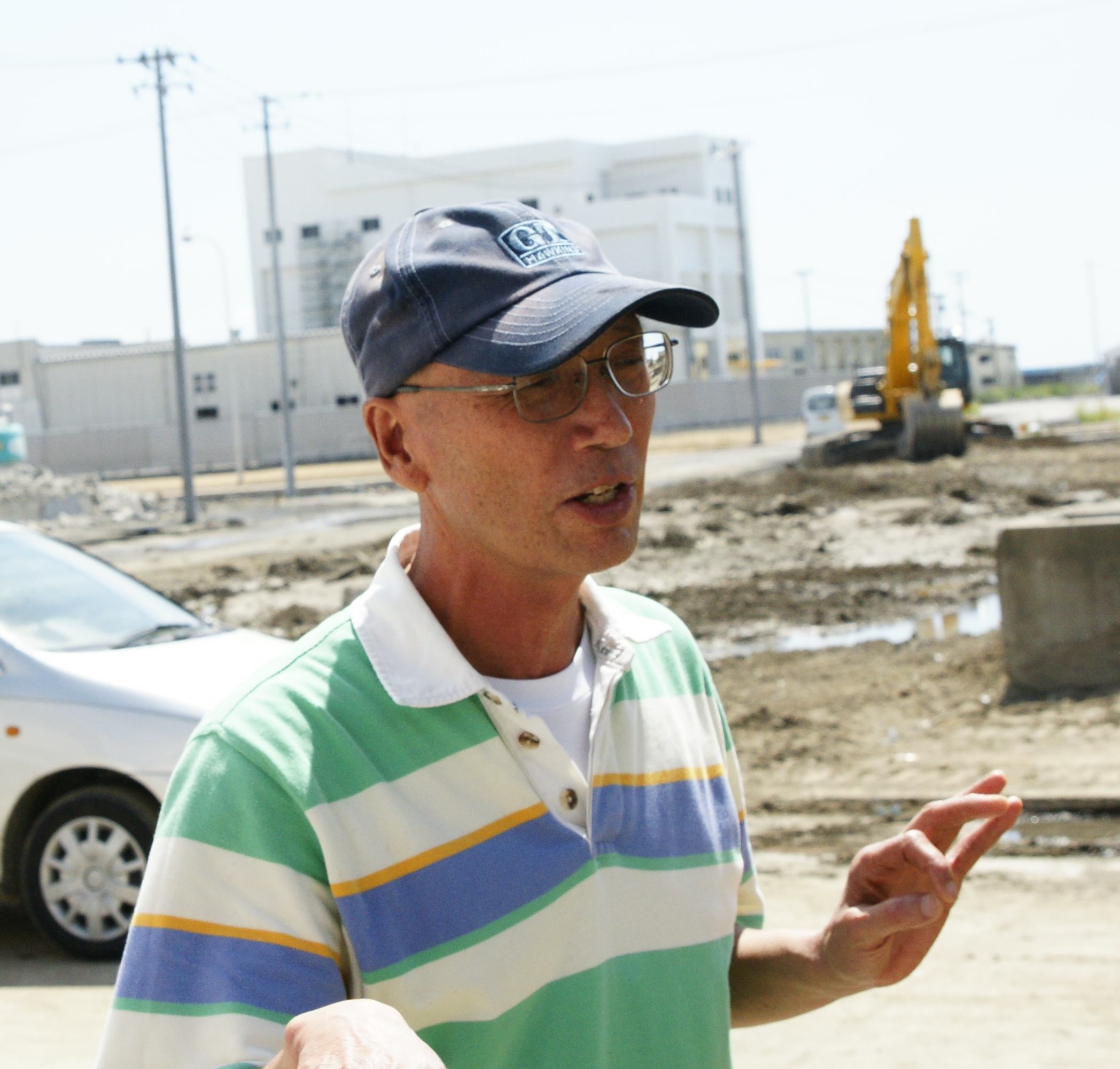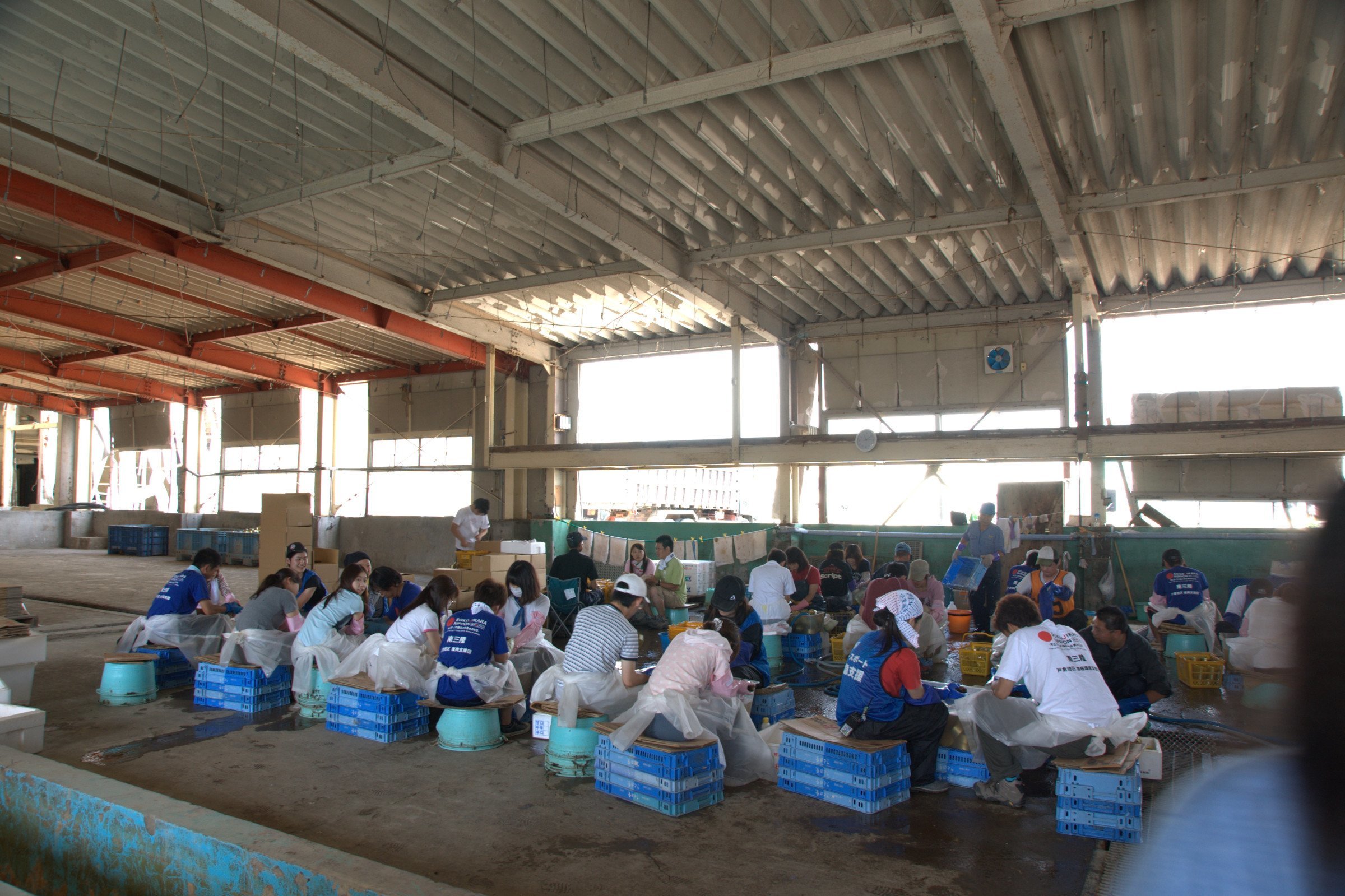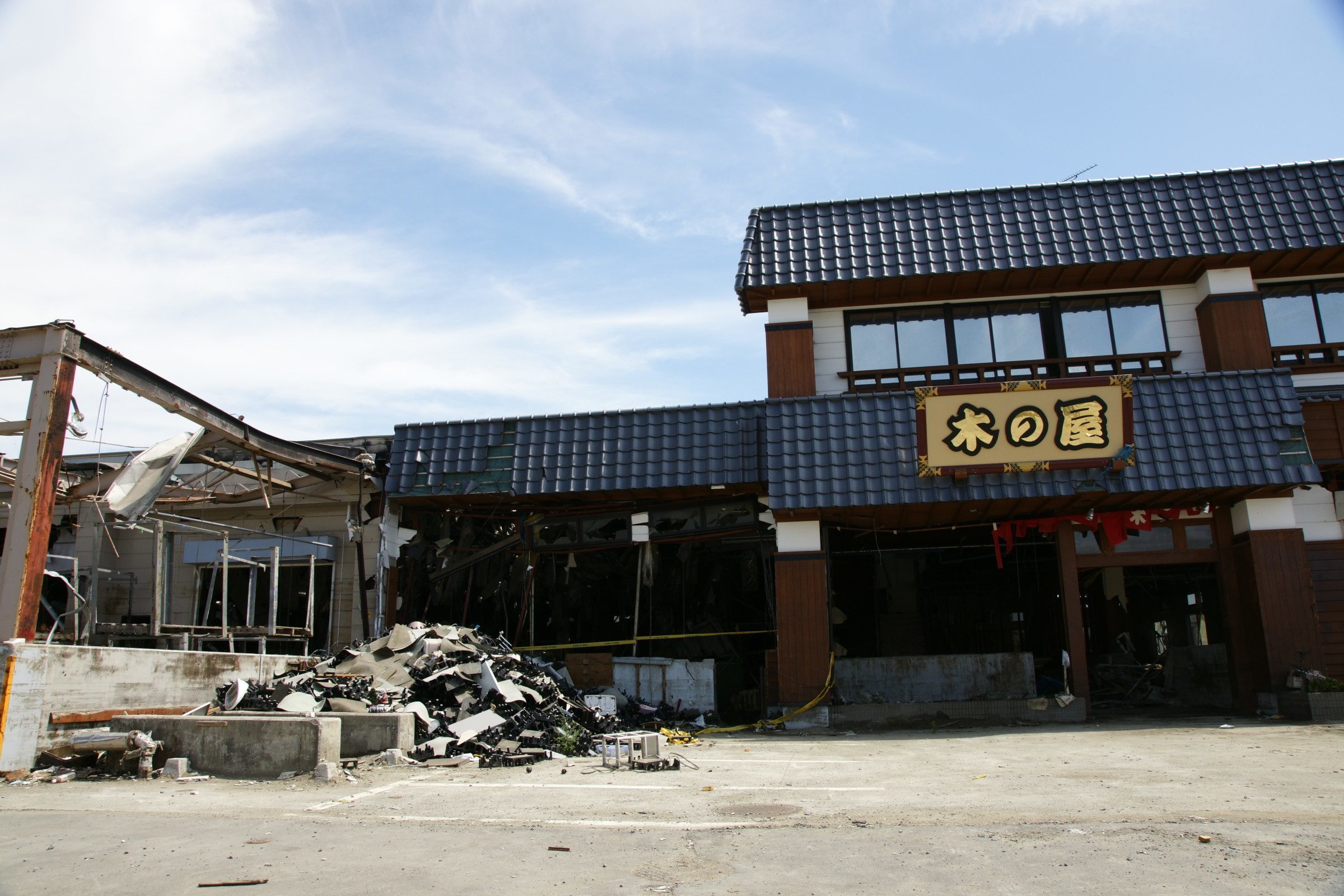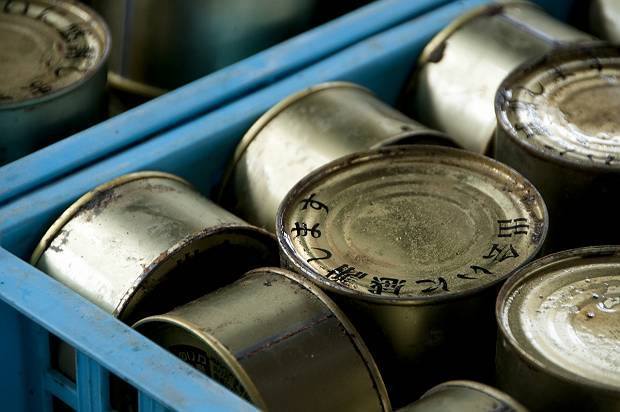Like this post? Help us by sharing it!
“Look around you” begins Ito-san, a manager from Kinoya fish processing company as he gestures to the devastated buildings on either side . “Before the tsunami there were twenty companies here – only two have started up again and are trying to get back on their feet”. We are standing next to a shell of indeterminate industrial purpose. But this is Ishinomaki so without a doubt this building must have been dedicated to fish. Inside the barren shell, seated on piled up blue and white plastic crates are around 40 people of varying ages. Some look like fresh faced students, others are older. All are wearing rubber gloves in assorted colours – blue, pink, cream, yellow – and are diligently engaged in rinsing an endless number of glinting gold cans.

The workers are volunteers from Peace Boat, a Japanese NGO that has served projects across the globe but has for the past five months, supplied tens of thousands of hands to assist with the clean up operation in Tohoku.

“On the day of the earthquake,” continues Ito-san, “we got early warning of what was coming. We had radio contact from the fishing boats at sea. They warned us to get out, to run to the high ground”. Kinoya employed approximately 1300 people before the tsunami and all those working that day were evacuated at pace to the hillsides above the town. “I watched the waves come in,” says Ito. “I have lived here for over 50 years; I had seen tsunami, two or three metres, perhaps five. But never like this. It was ten, maybe fifteen metres high.” Ito-san’s reportage is clearly delivered. He is softly spoken but does not falter once or hesitate.
“We were on the hillside for three days. We had nothing to eat. The waves continued for that whole time. Every 30 minutes a wave would arrive and then pull back to the ocean. Only after three days did the waters recede and we felt it was safe to send some people down to the town.”
“There they found our cans, everywhere, thousands of them. They opened one and found it was good to eat so this is what we all ate. Kinoya cans of fish. However, since many people knew that the cans were from our factory, nobody tried to pick them up because they felt it was inappropriate to eat them without permission. So, after few days, some people living in the shelter came to our CEO – who was also staying at the shelter like the others – and asked for permission to pick up and distribute the cans to the people in the shelter. Our CEO accepted their request, and then 50 or 100 people started picking the cans up, to share with the thousand people waiting at the shelter. Afterward the newspapers heard about it and began calling them the ‘cans of hope’.”
It is a catchy marketing slogan and Ito-san goes on to explain how they are trying to restart the business, little by little, recovering as many cans as possible with the help of volunteer workers before distributing to stores in the local area.

I admire Ito-san’s fortitude and resolute determination. He sees Kinoya as pioneers, showing the way to recovery for the people of Ishinomaki; taking small but definite steps, sending the message that they will not be broken. Yet there is also a tinge of despair. “These workers have to leave by 4pm” he says. “Since the earthquake, when the tide comes in it covers this land.” The land here has dropped over one metre. “The government should raise this up again so we can work again and rebuild our factories. It is our job to raise capital from banks and investors. But we can not raise the land. The government has to do it.”
And it is this final statement that makes me feel the hopelessness of the situation: This land is no longer suitable for people to live and work on. It has been claimed back by the ocean. As I look around at the empty concrete shells, piles of debris and vast areas of wasteland, I can not see a day when Ishinomaki will again be a vibrant industrial fishing town and the houses and factories will be rebuilt.
But perhaps I am wrong. We leave, each with our own shiny gold can of hope wrapped in newspaper, a small symbol of the road to a brighter future.


